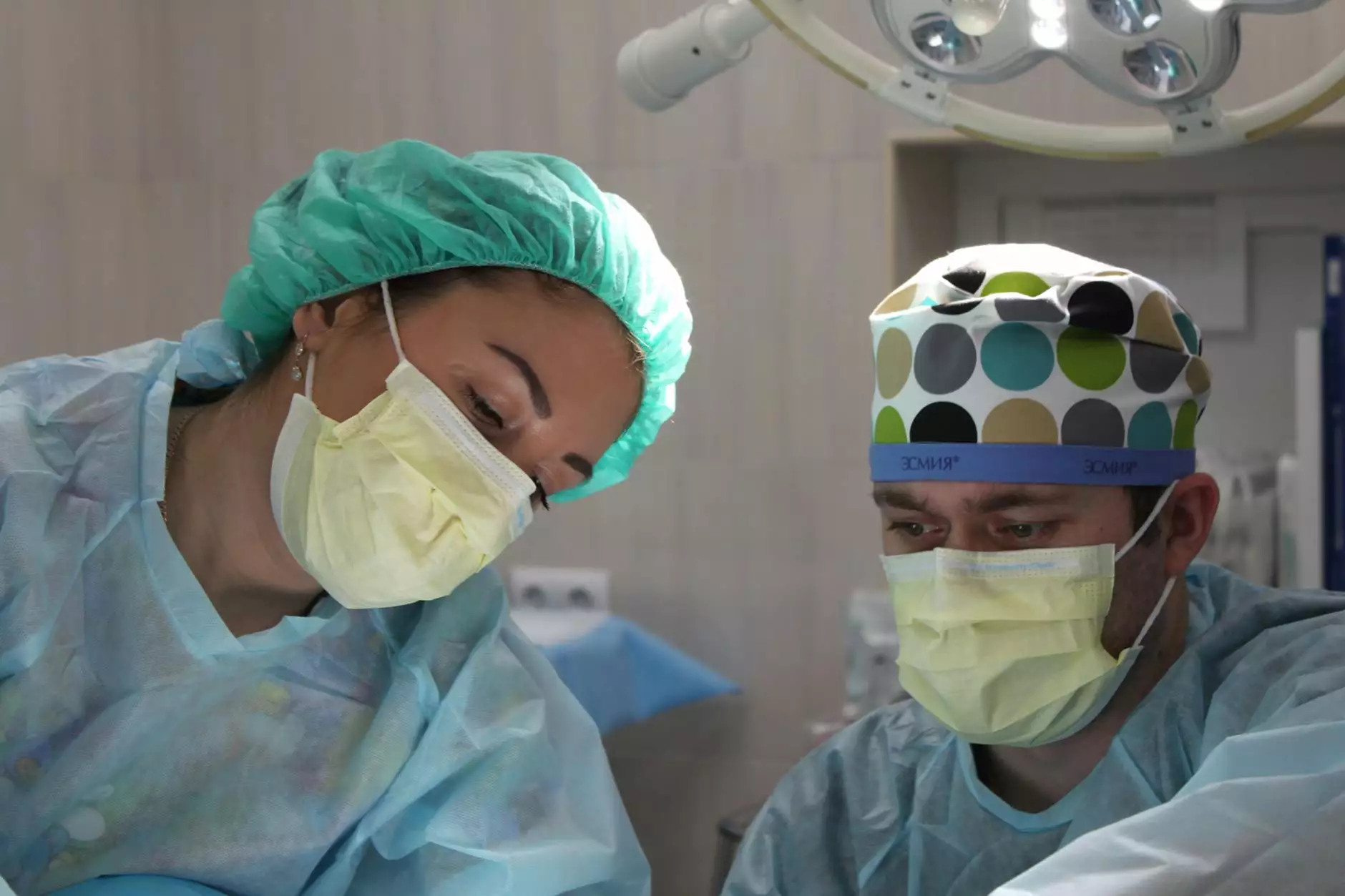Comprehensive Guide to Diagnostic Hysteroscopy: A Pioneering Approach in Women's Healthcare

In the realm of modern gynecology, diagnostic hysteroscopy stands out as one of the most significant technological advancements dedicated to improving women's reproductive health. With its minimally invasive nature, exceptional diagnostic accuracy, and therapeutic potential, hysteroscopy has revolutionized the way Obstetricians & Gynecologists assess and treat intrauterine conditions. In this comprehensive guide, we delve into the intricacies of diagnostic hysteroscopy, exploring its procedures, benefits, technological innovations, and why it is indispensable in contemporary women's healthcare.
Understanding Diagnostic Hysteroscopy: What It Is and How It Works
Diagnostic hysteroscopy is a specialized medical procedure that allows healthcare providers to directly visualize the interior of a woman's uterine cavity with the aid of a thin, lighted instrument called a hysteroscope. This technique offers a real-time, magnified view of the uterine walls, endometrial tissue, and any intrauterine abnormalities that may be contributing to fertility issues, abnormal bleeding, or other gynecological conditions.
The procedure involves inserting the hysteroscope through the vagina and cervix into the uterine cavity. It is generally performed under local anesthesia, sedation, or general anesthesia, depending on the complexity of the case and patient preferences. Since the procedure is minimally invasive, it typically requires only a short recovery time and results in minimal discomfort.
Historical Development and Technological Advancements in Diagnostic Hysteroscopy
The journey of diagnostic hysteroscopy from its origins to its current state reflects remarkable technological progress. Early hysteroscopic methods used larger instruments that often caused discomfort and limited visualization. Today, innovations such as high-definition cameras, slender flexible hysteroscopes, and advanced imaging modalities such as 3D visualization have greatly enhanced diagnostic accuracy. Portable hysteroscopic systems further facilitate outpatient procedures, making the process more accessible and comfortable for patients.
Different Types of Hysteroscopes Utilized in Diagnostic Procedures
- Rigid Hysteroscopes: Traditional, with a stiff, inflexible tube providing excellent image quality, ideal for detailed inspection and removal procedures.
- Flexible Hysteroscopes: Incorporate flexibility for navigating complex uterine anatomy and minimizing patient discomfort, suitable for office-based diagnostics.
- Miniaturized Hysteroscopes: Smaller diameter scopes used for office procedures, greatly reducing procedural invasiveness and discomfort.
Indications and When to Consider Diagnostic Hysteroscopy
Diagnostic hysteroscopy is recommended in a range of clinical scenarios, including:
- Investigating abnormal uterine bleeding (heavy, irregular, or postmenopausal bleeding)
- Evaluating recurrent pregnancy loss or infertility
- Diagnosing intrauterine adhesions or Asherman syndrome
- Identifying fibroids, polyps, or septa within the uterine cavity
- Assessing congenital uterine anomalies such as septa or bicornuate uterus
- Evaluating retained products of conception after miscarriage or delivery
The Procedure: Step-by-Step Process of Diagnostic Hysteroscopy
Preparation and Preoperative Evaluation
Prior to the procedure, thorough evaluation includes medical history, pelvic examination, and imaging studies like ultrasound. Patients are advised to follow specific preparatory protocols, including an assessment of bleeding risks and antibiotic prophylaxis if indicated.
Diagnostic Hysteroscopy in Practice
During diagnostic hysteroscopy, the patient is typically positioned in lithotomy. The procedures include:
- Insertion of the speculum to visualize the cervix
- Dilating the cervix gently if necessary, especially in cases of stenosis
- Introducing the hysteroscope into the cervical canal and advancing into the uterine cavity
- Infusion of a distension medium (such as saline or CO2) to expand the uterine walls for better visualization
- Careful examination and assessment of the uterine cavity, noting any structural anomalies or pathological lesions
- Optional biopsies or removal of intrauterine abnormalities if necessary
Post-Procedure Care and Follow-up
Most patients experience minimal discomfort and can resume normal activities shortly after. Follow-up consultations focus on discussing findings, further treatment options if required, and addressing any postoperative concerns.
Benefits of Diagnostic Hysteroscopy Over Traditional Diagnostic Methods
Compared to traditional blind procedures like dilation and curettage, diagnostic hysteroscopy offers several advantages:
- Direct visualization: Allows precise identification of intrauterine pathology
- High diagnostic accuracy: Minimizes the likelihood of missed lesions
- Minimally invasive: Reduced tissue trauma, pain, and recovery time
- Therapeutic potential: Enables simultaneous treatment of benign lesions such as polyps or adhesions
- Outpatient procedure: Usually performed without general anesthesia in an office setting
- Lower complication rates: Reduced risk of infection, bleeding, or uterine perforation
Innovations Improving Diagnostic Hysteroscopy Outcomes
Emerging technologies are continuously enhancing the diagnostic and therapeutic capacities of hysteroscopy, such as:
- 3D Imaging: Provides comprehensive spatial understanding of uterine anatomy
- High-Definition Cameras: Superior image resolution for detailed assessment
- Electrosurgical Devices: Facilitates precise removal of intrauterine lesions during diagnostic procedures
- Operative Hysteroscopy: Combines diagnosis and treatment in a single session, reducing patient burden
- Wireless and Miniaturized Devices: Increase accessibility for outpatient diagnosis
Significance of Diagnostic Hysteroscopy in Fertility and Reproductive Health
For women facing infertility or recurrent pregnancy loss, diagnostic hysteroscopy provides critical insights into intrauterine factors that could hinder conception or pregnancy maintenance. Detecting polyps, fibroids, septa, or adhesions enables targeted treatments that significantly improve conception rates. Its precision and safety make it the preferred choice for fertility specialists aiming to optimize reproductive outcomes.
Why Choose Leading Gynecologists and Obstetricians for Diagnostic Hysteroscopy
Experience matters when it comes to diagnostic hysteroscopy. Reputable clinics and specialists, such as those listed on drseckin.com, utilize advanced equipment and follow evidence-based protocols to ensure optimal patient outcomes. Such providers emphasize:
- Personalized treatment plans based on comprehensive assessments
- Use of the latest technological innovations for enhanced accuracy
- Minimally invasive techniques to reduce patient discomfort
- Consistent updates on emerging procedures and treatments
- Holistic patient care with emphasis on safety, comfort, and results
The Future of Diagnostic Hysteroscopy: Trends and Prospects
The evolution of diagnostic hysteroscopy is poised for exciting advancements, such as:
- Integration of artificial intelligence to improve lesion detection and diagnosis
- Enhanced 3D and 4D imaging for dynamic assessment of uterine function
- Development of even smaller, more flexible hysteroscopes for office-based procedures
- Combining hysteroscopy with other imaging modalities like MRI for comprehensive evaluation
- Expansion into outpatient clinics with highly skilled specialists
Conclusion: Embracing Innovation in Women's Gynecological Health with Diagnostic Hysteroscopy
Diagnostic hysteroscopy exemplifies the remarkable progress in minimally invasive gynecological diagnostics. Its ability to provide detailed, real-time visualization of the uterine cavity, combined with its therapeutic potential, positions it as a cornerstone of contemporary women's health. Patients benefit enormously from its safety, accuracy, and efficiency, contributing to better diagnosis, effective treatment, and ultimately, improved reproductive health outcomes.
Leading clinics and healthcare providers dedicated to women's wellness offer this advanced technique to ensure your gynecological health is accurately assessed and appropriately managed. If you seek expert care, visit drseckin.com to learn more about the latest innovations in diagnostic hysteroscopy and how they can assist you in achieving optimal reproductive and overall gynecological health.









